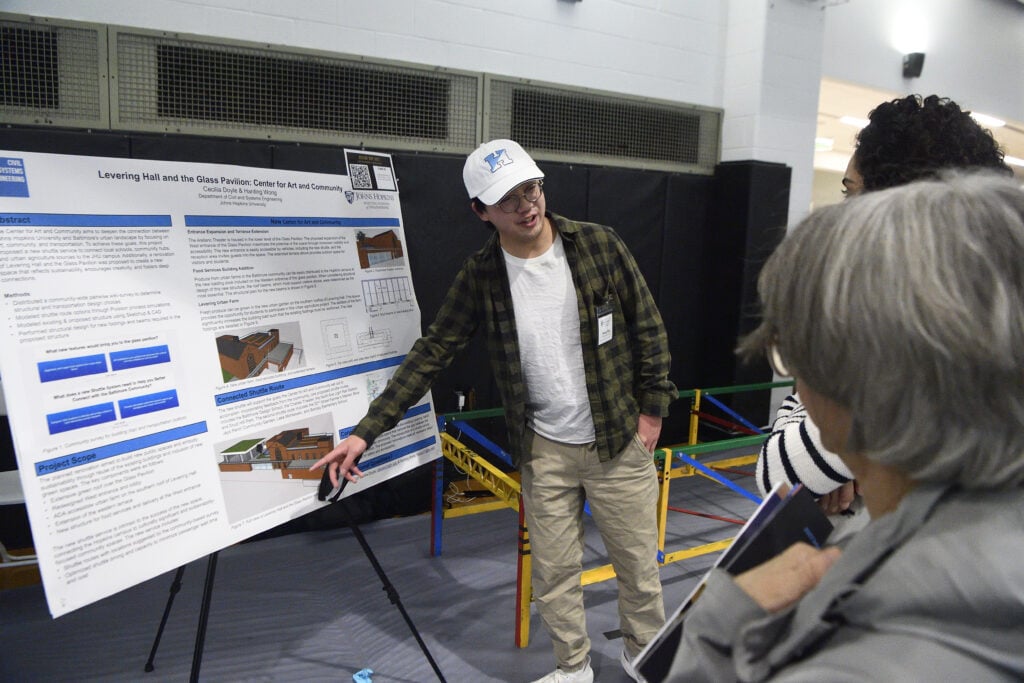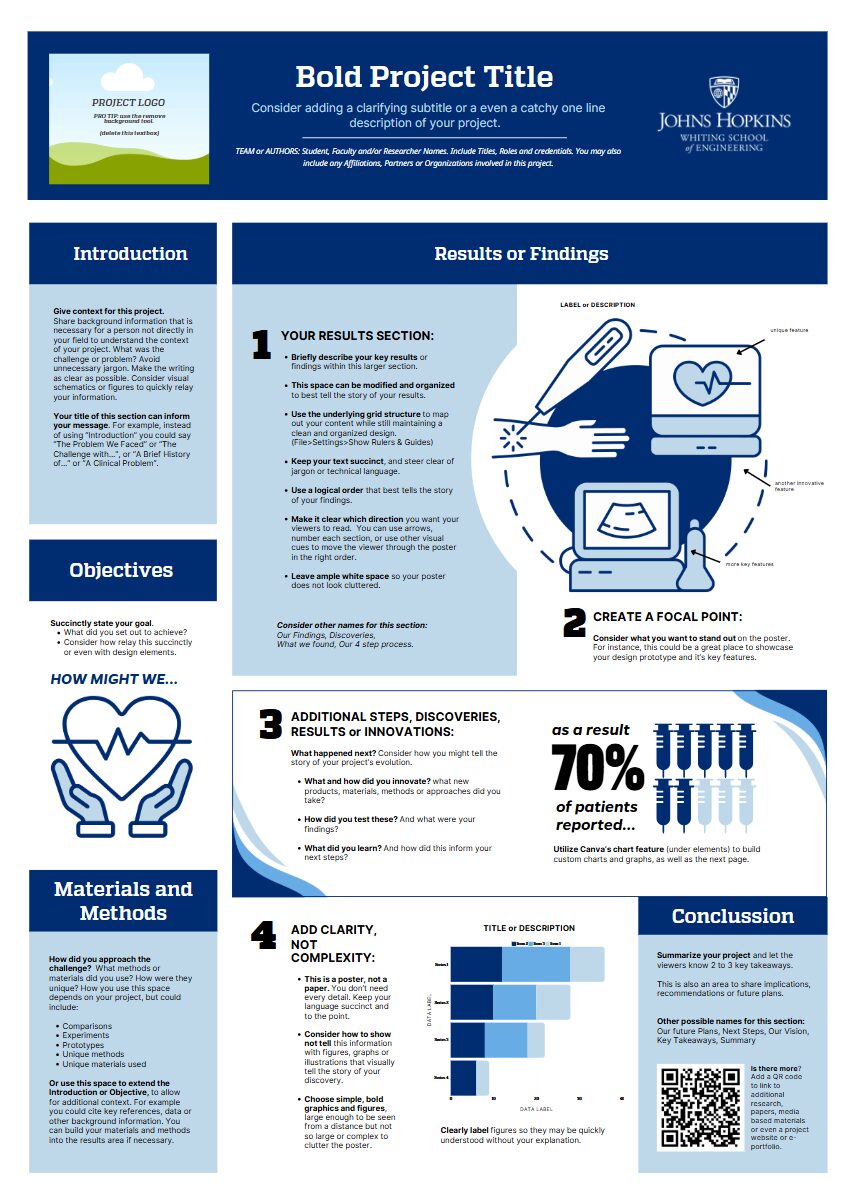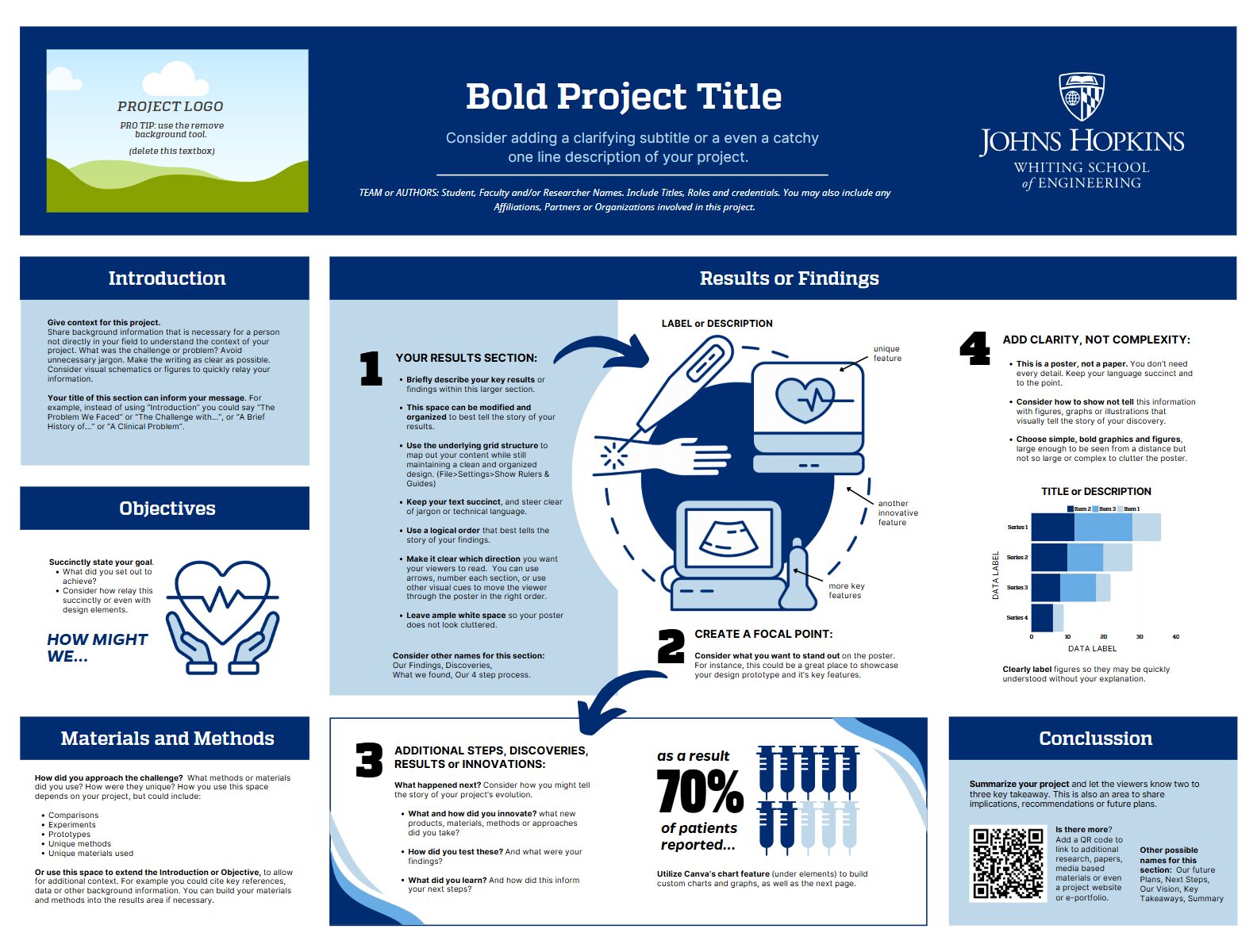Support for Design Day Materials
For support with you poster or presentation please visit the Technical Communication Lab.
You can book a 50min appointment here Design Day Help:
Technical Communication Lab consultants can help you prepare for Design Day however you need: brainstorm an audience-friendly takeaway, craft a memorable narrative, rehearse your delivery, review your poster design, and more! You can book an appointment in-person or online, individually or with a group.
Online Design Gallery Project Submission
All submissions for the 2025-26 academic year must be submitted by April 24, noon to be visible on Design Day 2026. You may submit projects through August 2026 for posting in the 2026 Design Project Gallery.
Required Materials
These materials are required for all submissions.
- Project title
- Primary affiliated WSE program
- Course name
- Project description (150 words or less)
- Team members’ names
- Course faculty
- Project mentors, partners and sponsors
- Project photo*
- Project photo caption (50 words or less)
- Project photo alt text (50 words or less)**
*Submit a photograph that represents your project but is also fun and engaging, such as a picture of the project team or a demo. Do not submit a project poster as your photo. The photo must be in a 3:2 aspect ratio with a minimum size of 1820 x 720 pixels. See the below examples of good project images.
** Alt text, or alternative text, should be brief and descriptive. Read more about digital accessibility at JHU.
Optional Materials
You may submit the following optional materials as they are applicable to your project.
- YouTube link to project video
- Final project poster*
- Poster description
- Final project whitepaper (PDF format)
- Whitepaper description
- Professional bios
- Additional information
*Your project poster must be submitted in two formats. You must submit a .PDF and a .PNG file. If you have created your poster in PowerPoint, you can follow the instructions to export as a PDF and export as a PNG from the source PowerPoint file. Other software should have similar functionality.
Poster Best Practices and Guidelines
Display and Dimensions
Posters will be displayed on 8’ x 4’ pin boards and must adhere to the size guidelines based on the number of presenters per poster. The maximum poster sizes are provided below for the team size categories.
Small Teams(1-2 people) – Vertical: 30″ wide x 42″ tall
Medium Teams (3-4 people) – Horizontal or Vertical: 42″ wide x 42″ tall
Recommended 42″wide by 31.5″ tall for a horizontal layout (see template below)
Large Teams (5+ people) – Horizontal: 78″ wide x 42″ tall
Recommended 64.5″ wide x 42″ tall (see template below)
Posters must be dropped off to Danielle Campbell in Wyman N125 by noon, Friday April 24.
Poster breakdown is immediately following the closing remarks for Design Day on April 28.



Templates and Branding
Small Vertical Poster
30″ x 42″ (2.5′ x 3.5′)

Medium Horizontal Poster
42″ x 31.5″ (3.5′ x 2.6′)

Large Horizontal Poster
64.5″ x 42″ (5.4′ x 3.5′)

For usage of the WSE and or JHU logos, please consult the university branding guidelines.
Presentation Best Practices and Guidelines
Slides and Auxiliary Materials
All materials created for presentations should follow best practices for accessible content.
- Use adequate contrast between text and background colors.
- Use larger font sizes for legibility; a minimum size of 24pt is recommended.
- Limit the amount of text on slides.
- Leave about 10% of blank space at the bottom of all presentation slides. Presentations will be recorded and display live captioning, and will obscure material if it extends all the way to the bottom of the slide. JHU’s Center for Media and Technology Solutions (CMTS) is supporting all of the AV needs for this JHU Design Day.
- For materials that will be provided to participants digitally, use headings, text, descriptive links, and image ALT tags appropriately to create accessible documents. (Read about accessible PowerPoints and PDFs.).
Presentations
- Do not simply read your slides out loud; not only is reading aloud tedious, but the audience can read during or after the presentation if they want. PowerPoint speaker notes can be used to help with this.
- Verbally describe visual content, including graphs and videos without sound. This provides descriptions to participants with low or no vision, or have a seat with limited visibility.
- If an audience member asks a question, repeat or summarize their question before you answer. This ensures the rest of the audience (including participants watching the recording) can hear it.
All presentation files will be managed by your course faculty; please see them for specific details about submitting your files and loading them onto the platform laptop. If you have any special request for your presentation (e.g. audio files), please let your course faculty know.




